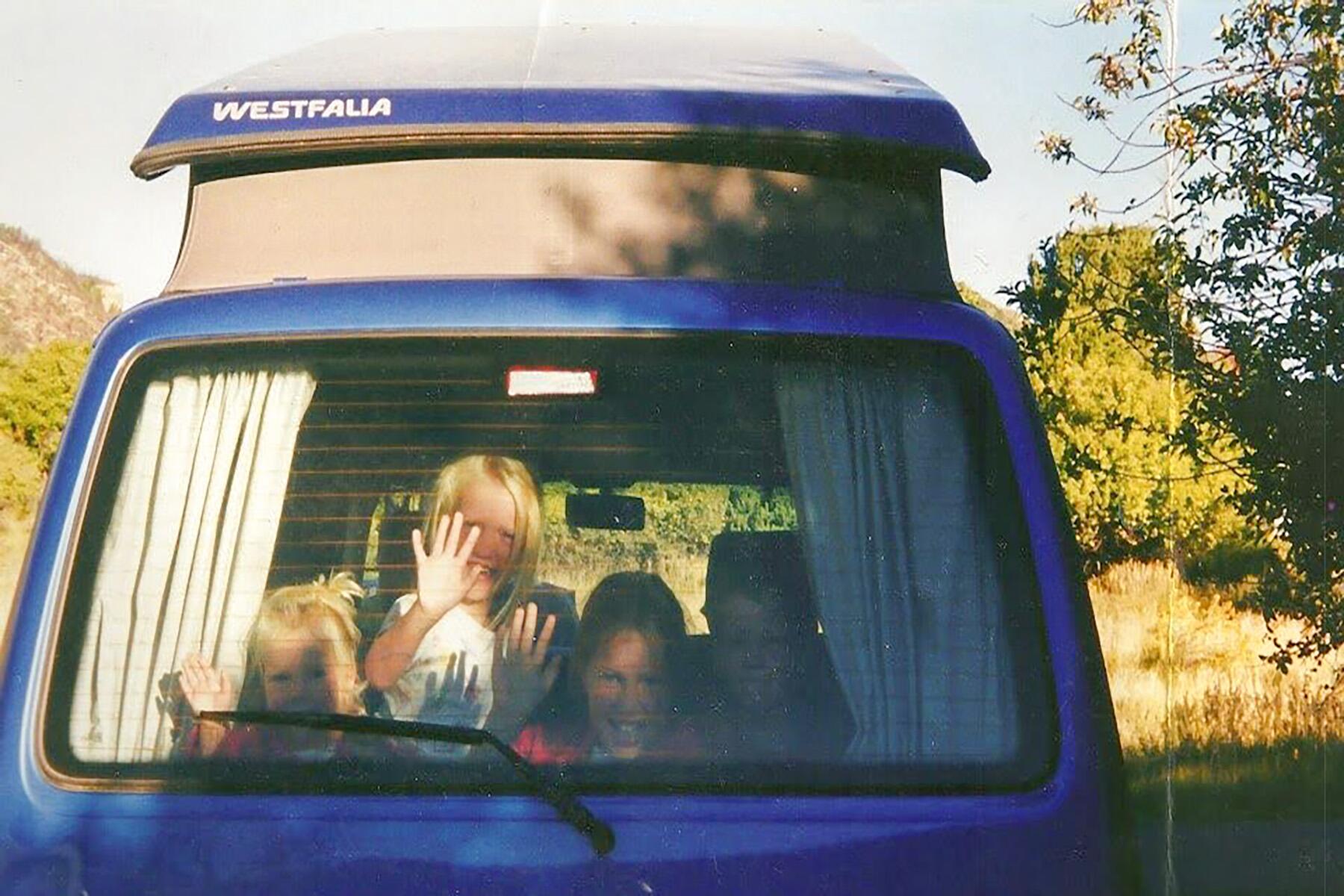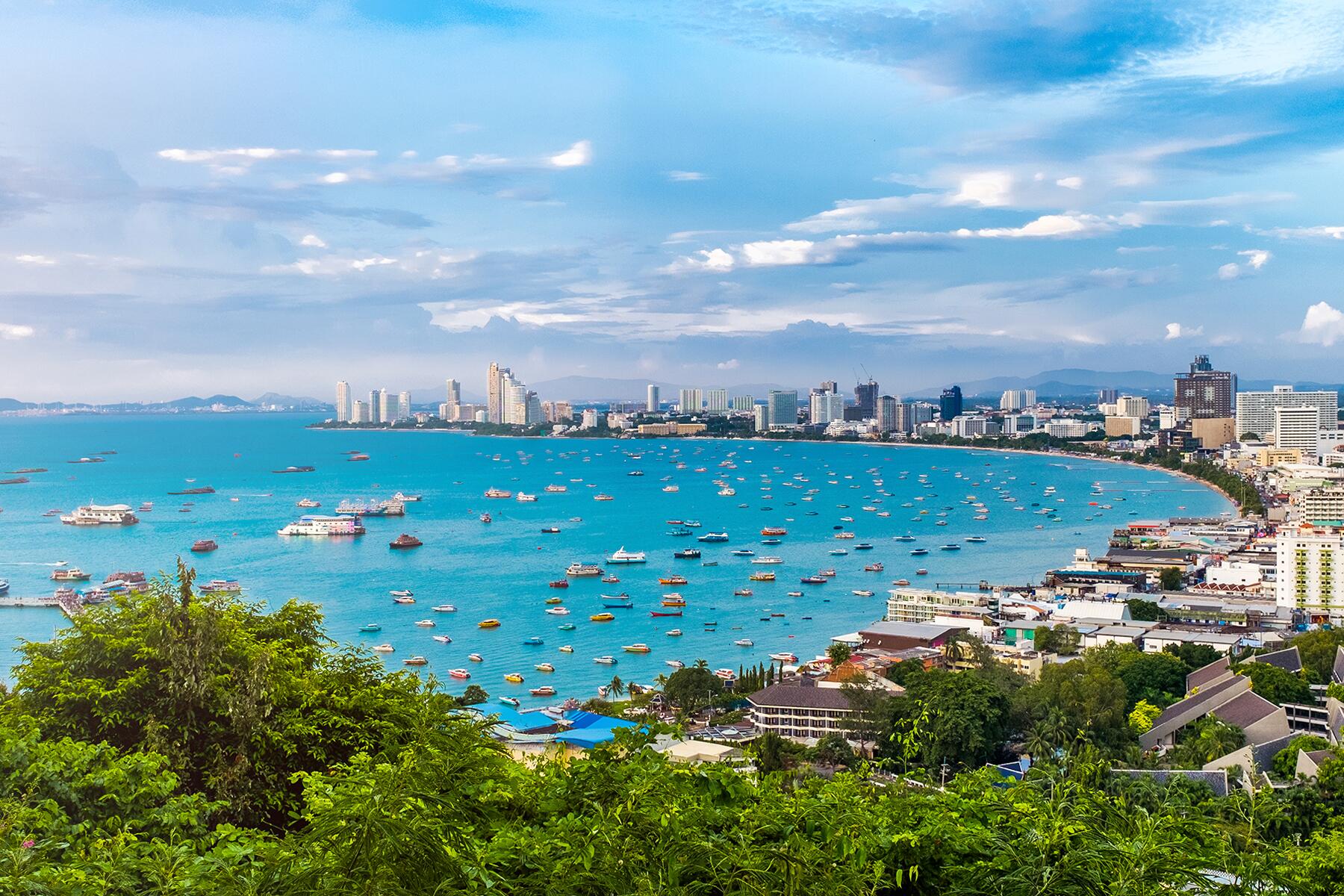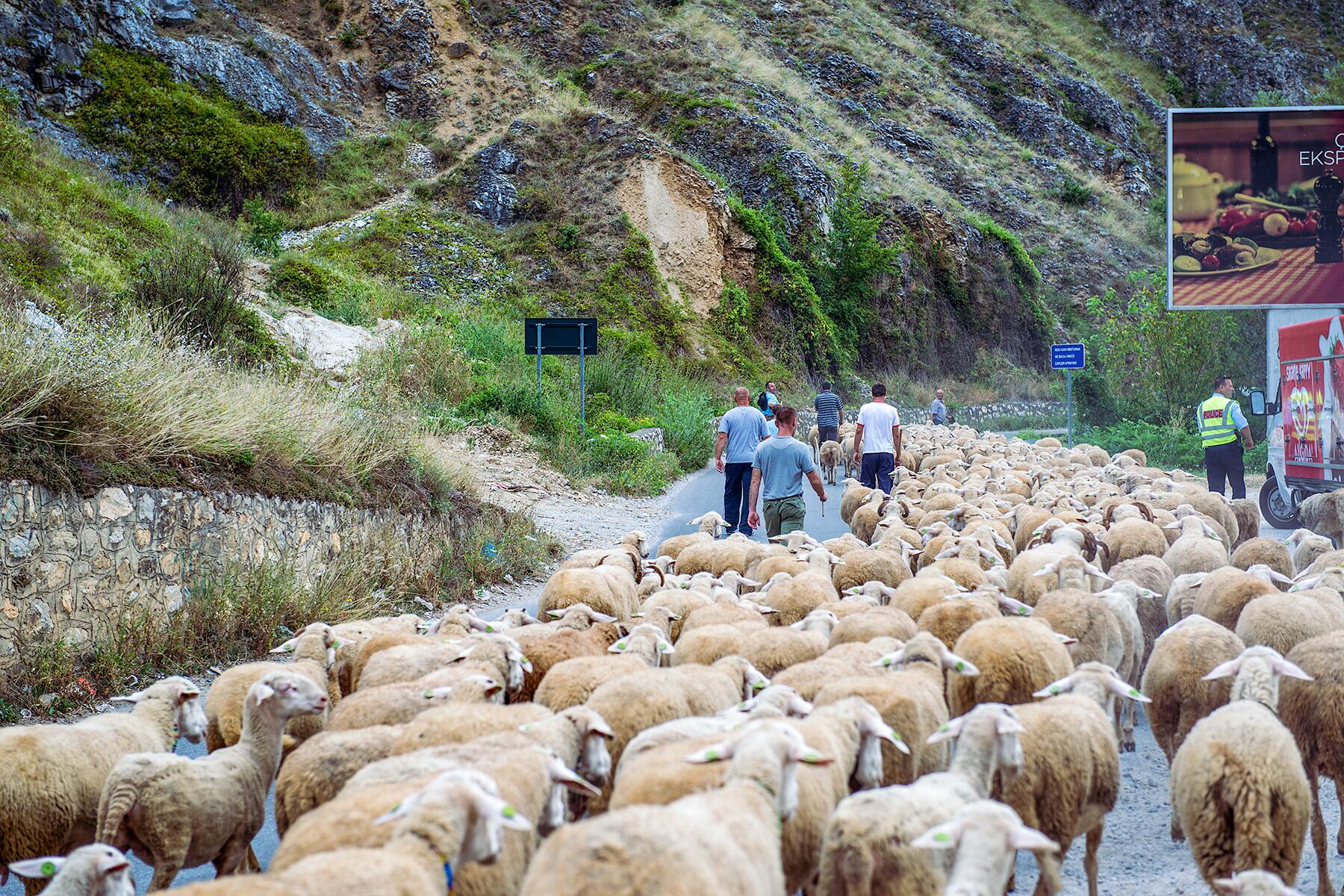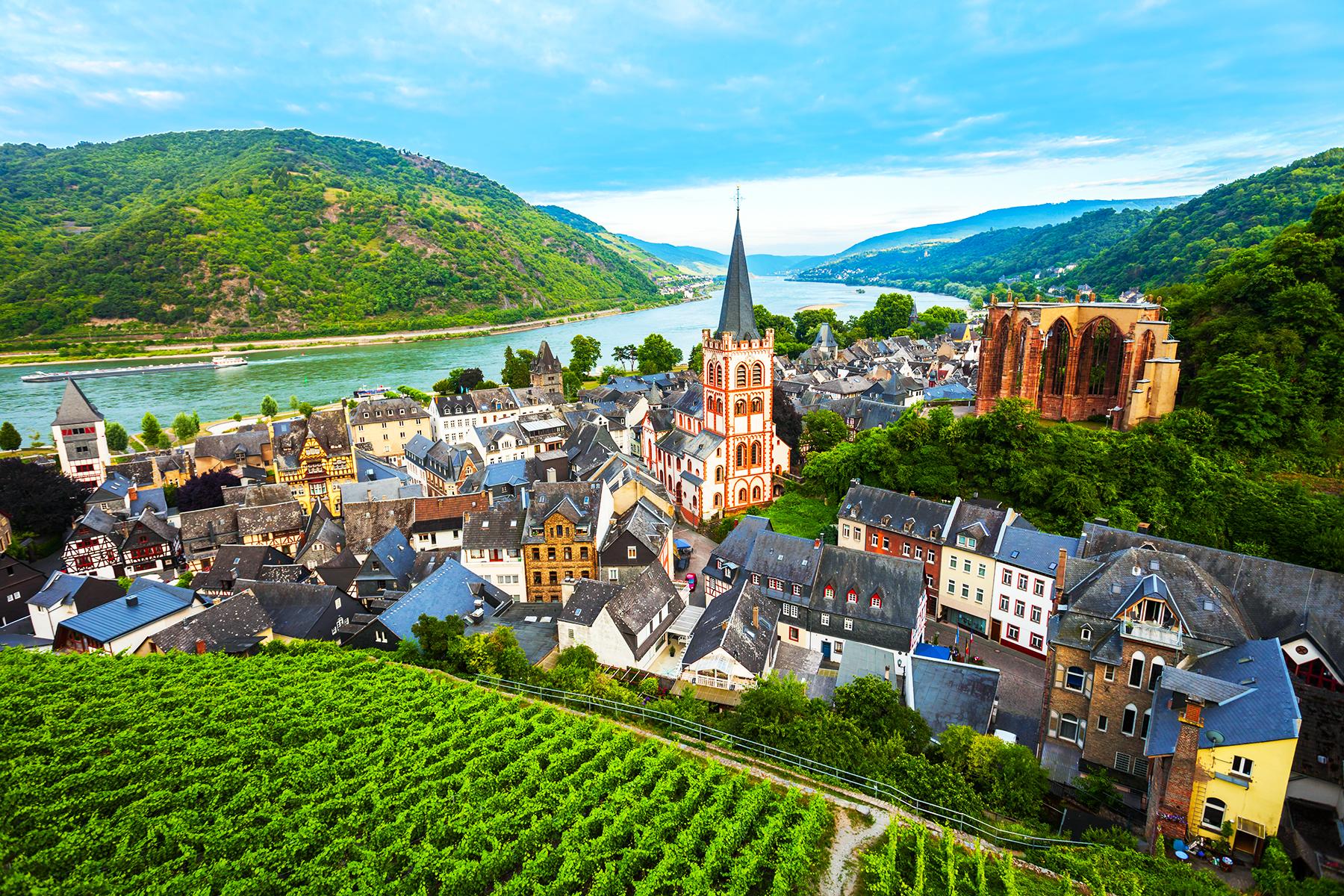From the Bavarian Alps and the Black Forest in the south, to the Baltic Sea in the north, Germany is so much more than oompah bands and beer. Explore Germany’s complicated history and fantastic art scene as well as incredible food and drink in our guide to what to see and do.
Visit the remnants of the Berlin Wall, probably the world’s most famous symbol of the Cold War, castles that inspired Disney, scenery that inspired Schiller and Goethe, architecture made famous by Gropius and Breuer, festivals celebrating the music of Bach and Wagner, and fill up on hundreds of varieties of wursts and local wines. From the sobering history of the Cold War and the World Wars, to fairy tale castles you can stay at, to modern art and the Berlin music scene, grab your stein of beer and a wiener schnitzel and dive into this list of things to do and see while you visit Germany.
Drive Back to the Cold War
WHERE: Berlin
The Trabant, better known as the Trabi, was the only car manufactured in former East Germany, and surviving models are one of the most popular ways to tour the city. Driving one yourself is tricky, since there’s an odd system of levers to push and pull to change gears, so it’s safer to opt for the guided tour with a driver. Appropriately, tours begin and end at Checkpoint Charlie, where’s there’s still sandbags and warning signs that you are leaving the Western sector, and an actor in an old GDR uniform waving you through a recreated police control stop. The drive stops at a part of the remaining wall but avoids the busiest downtown streets.
Related: An Atomic Blonde Guide to Berlin
Wander the Berlin Wall Walk
Most of the wall has been demolished, but some of the hundreds of watchtowers remain, where it’s easy–and painful–to visualize the desperation of those who tried to flee across the border between East and West and died trying. There are memorials to many of those victims along the trail where the Berlin Wall stood, from 1961 to 1989, when the divided city was united again. Remnants remain at Potsdamer Platz and Checkpoint Charlie, and another good spot to visit is the Bornholmer Bridge, where East Berliners overwhelmed guards and became the first to push through to West Berlin.
Related: The Best Hotel Suites in Berlin
Recommended Fodor’s Video
See Cuckoo Clocks and More in the Black Forest
For sure, you could visit workshops where cuckoo clocks have been carved and assembled since the 1700s, although most visitors to the Black Forest today prefer the Europa-Park amusement park rides and the Michelin-star restaurants in Baiersbronn. Take a baking class at the Traube Tonbach to learn how to layer chocolate slices with sour cherries and schnapps-laced whipped cream into the world-famous Black Forest Cake. Then walk off the calories one of the hundreds of miles of walking and hiking trails starting and ending at the edge of town. Need a place to stay? We’ve got you covered.
INSIDER TIPTake advantage of the Black Forest Red Card, a tourist discount program which includes museum admission, local trains and boat trips, and use of an all-electric BMW i3 sedan.
Experience Pure Romance in Historic Bavaria
WHERE: Rothenburg ob der Tauber
There are enough fairy tale castles and picturesque medieval towns in the southern provinces of Bavaria and Baden-Wurttemberg that it’s been named The Romantic Road. Perhaps the best-preserved town along the route is Rothenburg ob der Tauber (red castle on the Tauber River), with charming cobblestone streets and buildings and churches that date to the 1400s. Walk the historic town wall ramparts dotted with 42 sentry watchtowers and cannons, and peek through openings for glimpses of the rolling countryside beyond.
INSIDER TIPTake the Night Watchman Tour, with a local guide dressed in Medieval garb, leading the way with a candle-powered lantern.
Get Car Crazy With Germany’s Automobile History
WHERE: Stuttgart
Mercedes-Benz and Porsche are headquartered here, with museums that track the past and future of automotive design and technology, and their social and economic effects on the world. Both museums are architectural gems, as different as the car companies themselves. The Mercedes-Benz Museum follows a timeline starting with the motorized contraptions patented in the 1880s by Gottlieb Daimler and Carl Benz, through the iconic gull-wing sports cars of the 1950s and the promise of self-driving cars to come. The Porsche Museum focuses on the company’s racing heritage, including some of more than 1,000 racing trophies on display, along with its fast six-figure street-legal models. The signature vehicle, though, and the first car you see at the top of the entry escalator, is a 1930s prototype designed by Ferdinand Porsche that eventually became the VW Beetle.
INSIDER TIPGermany’s other auto manufacturers also have museums in their headquarters cities: Audi in Ingolstadt, BMW in Munich, and VW in Wolfsburg.
Have a Happy Holiday in the Christmas Markets
Beginning in mid-November, Christmas Markets take over town squares in just about every city and town, with hand-made ornaments and winter clothing and traditional holiday foods including Lebkuchen (gingerbread cookies). There’s also gluhwein (spiced wine) for the adults and spiced cider for the kids. Larger cities such as Berlin have as many as 50 or 60 mini-markets around town, and even the smallest villages have music and dance performances, demonstrations of glass-blowing and other crafts, and a festive holiday atmosphere.
Related: The 8 Best Luxury Hotels in Berlin
Eat Unique Seasonal Veggies in the Spring
Each April and May, restaurant menus everywhere sprout platters of Spargel, delicate shoots of white asparagus. Unlike the more familiar green asparagus, these spears are cut below the surface, before they can turn green in the sunlight, and are fork tender after boiling or steaming. They are usually served with thick slices of Shinken (ham) and washed down with a fresh white wine or light beer. In the Frankfurt area, a week-long food and art celebration each May celebrates its popular Green Sauce, a seven-herb concoction usually served with hard-boiled eggs.
Enjoy Local Cuisine
Every German region or city has its own favorite dish. In Munich, it’s weisswurst, tender veal sausages that are boiled, not grilled, and served with sweet mustard and soft pretzels. The traditional place to eat them is at the Donisl, before the city’s famous Glockenspiel chimes 11 am. Berlin likes its currywurst, hot dogs topped with a slightly spicy curry sauce, available from vendors on nearly every street corner. The area around Heidelberg is known for maultaschen, which translates as “mouth pockets.” These meat-filled dumplings are served steamed or fried as a main course or bobbing in a soup.
Related: Meat! Beer! More Meat! and Other Things You Must Devour in Berlin
Cruise Down the Rhine River
WHERE: Rudesheim
Whether you take a short three-nighter or a longer seven-nighter, nearly every Rhine River cruise stops at Rudesheim, a picturesque hamlet where vineyards march down the hillsides to the riverbank. Sample local wines at on Drosselgasse (Thrush Alley), a narrow pub-lined lane that throbs with music and camaraderie year-round. The gorge just outside town–the narrowest and deepest part of the river is the source of the famous legend of Lorelei, the beautiful maiden who drowned and became a mermaid, then lured boatmen to their death with her siren song.
Sample the Beer Gardens
WHERE: Munich
Indoor brewpubs and outdoor beer gardens are central to German life, and two of the best, indoors and out, are in Munich. The world-famous Hofbrauhaus is a cavernous space where regular patrons have their own tables, called a Stammtisch, and can store their ornate mugs in special lockers. The Englisher Garten (English Garden) is Munich’s Central Park, with trails for jogging and biking, soccer fields, boating lakes and landscaping designed to mimic the 18th-century English countryside. The 1790 Chinese pagoda in the park’s center becomes a giant beer garden in warm weather, with around 7,000 seats in the self-service area and another 500 in the table-service restaurant section.
Related: Prost! This Oktoberfest, Take Your Beer to Go Along the Fünf Seidla Steig
Take a Hike Through the Parks
WHERE: Berchtesgaden
Germany’s first Alpine National Park contains more than 200 miles of marked trails through a lush green forest, ranging from easy footpaths for an afternoon stroll to steep hikes to a rustic overnight refuge, or simple cabin. Germany’s second highest mountain, the Watzmann, is visible above, and Lake Konigsee sparkles in the sunshine below. In the winter, there’s skiing at the Rossfeld snowfield and a luge track that operates year-round, including in summer. Also tour Salzbergwerk, aboard a miniature train that takes you more than a mile inside the mountain, to an enormous chamber where salt has been mined for hundreds of years.
INSIDER TIPConsider the easy mountain path between town and Eagle’s Nest.
Wander Around a Fairy Tale Castle
WHERE: Schloss Neuschwanstein
Construction in the 1860s of the opulent mountaintop castle by King Ludwig II nearly bankrupted Bavaria, but it has become one of Bavaria’s most popular and profitable tourist attractions and instantly recognizable as Walt Disney’s inspiration for his theme parks and logos. It took 14 craftsmen four years just to carve the intricate ceilings and woodwork in the king’s bedroom, one of the castle’s hundreds of rooms open for touring, with official guides tours only, no independent walk-throughs, except for the walking trails around the castle grounds.
Related: 15 of Germany’s Most Unmissable Palaces and Castles
INSIDER TIPBook your tour at least two days in advance, longer in peak tourist season.
Trek up a Hill—or Take the Funicular
WHERE: Heidelberg
Don’t exhaust yourself hiking up to the Schloss Heidelberg; take the Bergbahn (funicular). Save your energy for visiting the world’s largest wine cask, a walk-in giant in the basement of this historic castle, which also houses a medical museum. The varied architecture reflects its construction over several centuries, starting in the 1200s, including the charming garden created in 1612 by the royal Friedrich V for his Scottish bride, Elizabeth Stuart. Their love story is part of the lure of this popular castle, which is floodlight several times each summer at a festival that includes fireworks and outdoor concerts.
Get Your Beer on During Oktoberfest and Beyond
What started as a celebration of the autumn marriage of Bavaria’s Crown Prince Ludwig, later King Ludwig I, in 1810, has turned into the world’s largest annual party. The Munich Oktoberfest attracts more than six million visitors a year to the 18-day festival, to eat such Bavarian favorites as pretzels and schweinshaxe (crisp, roasted pig knuckle), sing songs, and drink beer. Swinging huge one-liter mugs, called “mass,” side to side in unison to the live bands is central to the experience. Temporary tents on the city’s fairgrounds are large enough to hold as many as 5,000 celebrants each. There also are amusement park rides, games of chance, and vendors selling local crafts, and it’s family-friendly during the day.
Related: 10 Tips for Surviving Oktoberfest
INSIDER TIPThe Canstatter Volkfest in Stuttgart is a smaller and less raucous Oktoberfest.
Explore the Great Doms
WHERE: Cologne
There are great doms (cathedrals) in most major cities, including some dating from the 1200s, like the huge Cologne Dom, the city’s landmark. With its soaring 515 foot towers, it was briefly the world’s tallest building, and contains a treasury of gold and silver and other artifacts even older than the dom itself. Reward yourself after the climb to the tower with a meal at Früh am Dom, in a former brewery in the shadow of the Dom, with vaulted ceilings and frescoes on the walls.
INSIDER TIPThe original eau de Cologne was produced here in the early 18th century, a light floral scent still made from the original formula. In an early example of branding, 4711 was named for the firm’s address, 4711 Glockengasse.
Relax and Spa in Hot Springs
WHERE: Baden-Baden
The Romans discovered the extensive hot springs here, which still attracts visitors to its mineral-laced curing waters. These days, Baden-Baden also attracts theater and music fans to Germany’s second largest festival house, its famous casino (Germany’s oldest and largest), and Iffezheim, to the horse racetrack. All date from the 1800s, when this was the glitzy destination for Europe’s wealthy (including royals) and such celebrities as Russian writer Fyodor Dostoyevsky (who included his experience in his novella The Gambler) and composer Richard Wagner.
INSIDER TIPA passport is required as ID to enter the casino even if you just want to watch the action at the gaming tables or admire the opulent interior and antiques.
Recognize the Sobering History
WHERE: Dachau
The town dates to the time of Charlemagne and was a thriving artist’s colony in the 1800s, but Dachau is most famous today as the site of Hitler’s first concentration camp, just 10 miles from his political base in Munich. More than 200,000 people were imprisoned here, of which more than 40,000 were exterminated, starved to death, or died of injuries from beatings by Nazi guards or the effects of medical experiments. Their memory is honored through photos and other documents, and while it is not a pretty place, touring the cell blocks and crematorium is a sobering and important reminder of the inhumanity of war.
Revisit the Trials of War
WHERE: Nuremberg
Although its recorded history dates to 1050, it is the recordings of the post-war Nuremberg Trials, the first international war crimes trials, that most of us associate with the city. Tour the Landgericht (Regional Court) where the trials were held, the Way of Human Rights at the sprawling German National Museum, and the Jewish Museum, which documents everyday life, including the current community.
INSIDER TIPThe Handwerkerhof (Handmade Crafts Building) is like stepping back into the Middle Ages, with craftspeople making, and selling, pewter, glassware, basketry, wood carvings, and toys.
Stroll the Beaches
WHERE: Usedom Island
There are hundreds of miles of white sand beaches along the Baltic Coast, dotted by a string of beach resorts that include 19th-century villas of the wealthy who summered here. Usedom Island, offshore from Stralsund, is a quiet escape. Much of the untouched landscape is a nature preserve home to rare birds including the giant sea eagle, with an eight-foot wingspan. Stroll the promenade at Kaiserbader (king’s bath), the island’s popular main beach, or escape the crowds at the more isolated Uckeritz beach.
Sample Red and White Wines
Blame the Romans, who introduced grapes to this region, for the grapes grown and bottled at small, family-owned vineyards that dot every open space in the southern half of the country. There are 13 official wine growing regions and even more official wine trails. The Moselle Valley is famous for its Riesling, but also try Elbling, an ancient variety cultivated by those Romans. In the Pfalz region, just east of Heidelberg, try lesser-known whites including Silvaner and Gewurztraminer. The region along the Neckar River and its tributaries in Baden-Wurttemberg produce mostly reds, including Trollinger, a light, easy-drinking local favorite.
INSIDER TIPMaiWein Festivals each spring celebrate the end of winter and the beginning of a new wine-growing season.
Stop and Smell the Flowers at Garden Island
WHERE: Mainau
It’s called the Garden Island, an outpost on the Bodensee filled with flowering gardens. More than a million colorful, fragrant and rare tulips, hyacinths, roses, rhododendrons, and more take turns blooming from spring to fall, and thousands of butterflies in the large conservatory in the center of the island. The gardens and paths were laid out in the 1800s by amateur botanist Grand Duke Friedrich I of Baden, who summered here. There are nearly a dozen restaurants and cafes but no overnight accommodations on the island, which is open year-round via regular ferry service from Konstanz.
Revel in the Royal Jewels
WHERE: Dresden
Drool over eye-popping collections of jewels amassed by the fabulously wealthy royalty who ruled until WWI. Most are showcased in their former palaces, which have been turned into museums. In Dresden, the castle of Augustus the Strong houses a king’s ransom in jewels in the Historic Green Vault. Because of its size, it’s limited to 100 visitors an hour and requires a reservation. No reservations are needed to drool over the diamonds, pearls, rubies, and emeralds the size of golf balls decorating the necklaces, bracelets, royal crowns, and scepters (the symbol of royal power) at The Residenz in Munich or the Landesmuseum in Stuttgart. Sunglasses are optional.
Go Skiing
WHERE: Garmisch-Partenkirchen
The site of the 1936 Winter Olympics, Garmisch-Partenkirchen continues to attract skiers and snowboarders to massive snowfields around the Zugspitze, Germany’s highest mountain (9,717 feet). With more than 30 miles of marked trails over three mountains–the Hasberg, Kreuzeck, and Alpspitze–there’s something for every level, from kids and other beginners to adrenaline junkies who prefer off-piste to groomed, and including the legendary Kandahar run, where world competition races are held. Partenkirchen is the older of the two co-joined towns, lined with historic buildings, many decorated with colorful frescoes. Garmisch is more convenient, with ski lifts a short walk, bus, or train ride from any part of town.
Spot the Architectural Significance
WHERE: Weimar
For many interested in architecture, Germany’s Gothic cathedrals and Baroque palaces pale in comparison with the classic, unadorned modernist structures of the Bauhaus movement, founded here by Walter Gropius in 1919. Its clean lines and boxy shapes have influenced everything from furniture to typefaces ever since. Take a Bauhaus walk from the Atelier at Bauhaus University to the Gropius-designed Monument to the March Dead, which commemorates those who tried to overthrow the short-lived Weimar Republic. The monument is in the historic cemetery where Goethe and Schiller are buried.
Enjoy the Sound of Music
WHERE: Bayreuth
Germany is justifiably proud of its classical music heritage and celebrates native composers including Johann Sebastian Bach, Felix Mendelssohn, Carl Maria von Weber, and Richard Wagner year-round with festivals and performances. The most famous likely is the annual Wagner Festival, which he founded in 1876 to showcase his own operas, including the so-called Ring cycle. There’s even a Wagner Museum here, in the house he owned with wife Cosima, daughter of fellow composer Franz Liszt. If you are not an opera lover, Bayreuth is still a charming place to visit, less than an hour from Nuremberg, with an impressive Baroque royal palace and a museum of beer brewing that includes product sampling.




